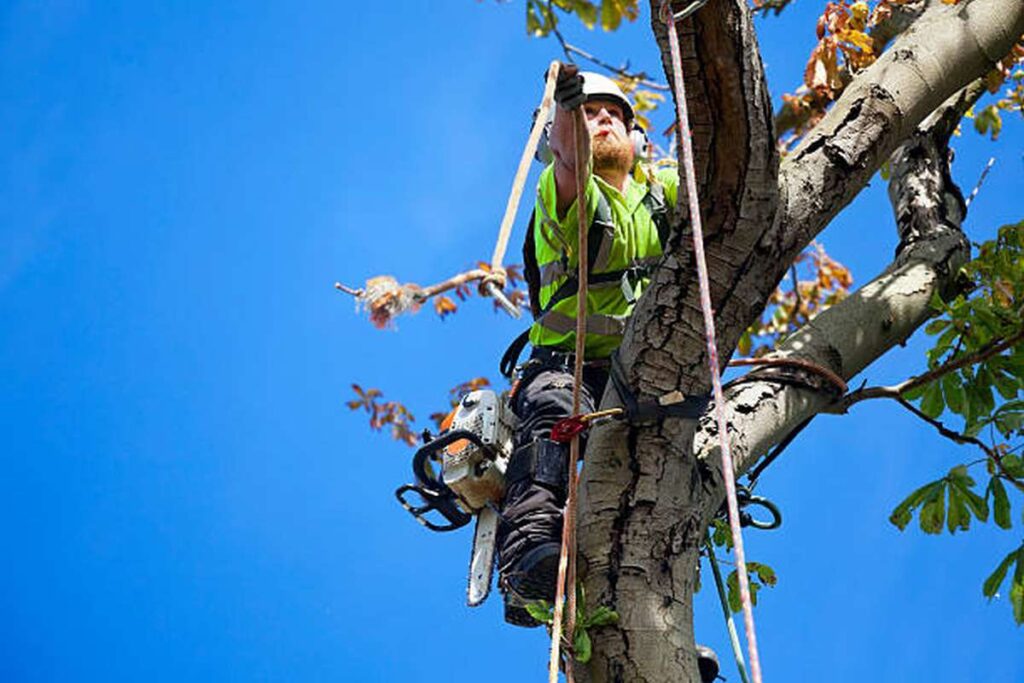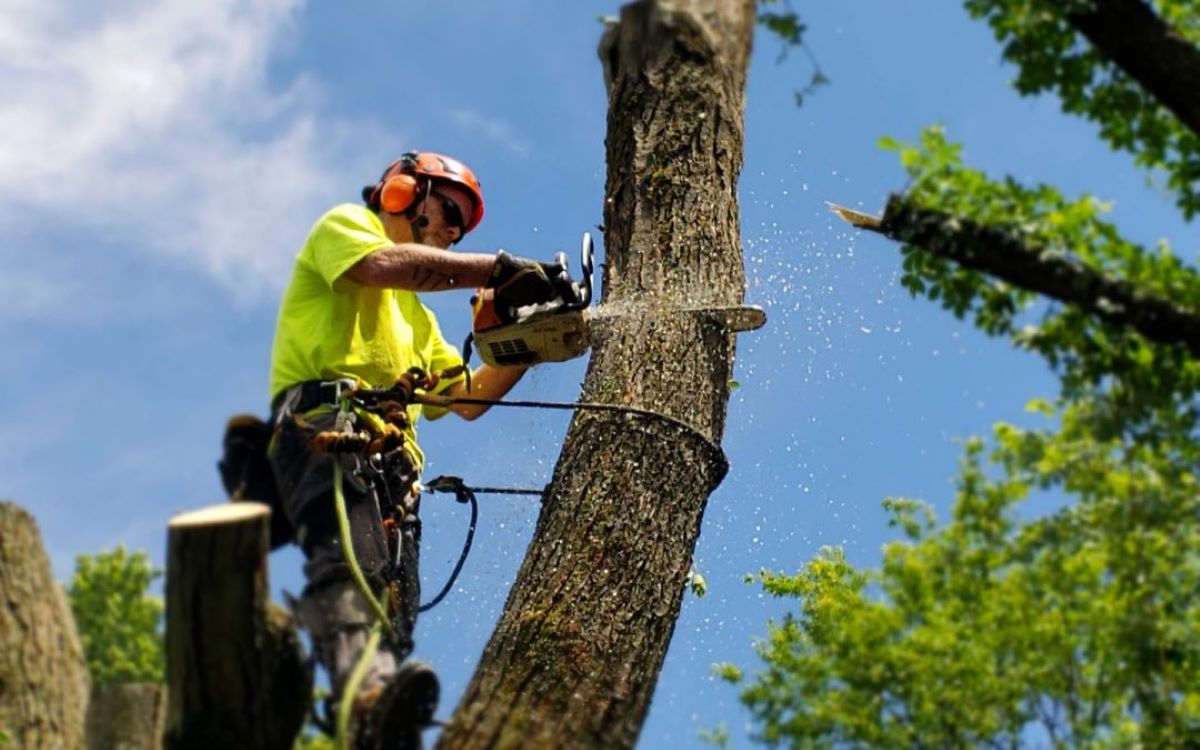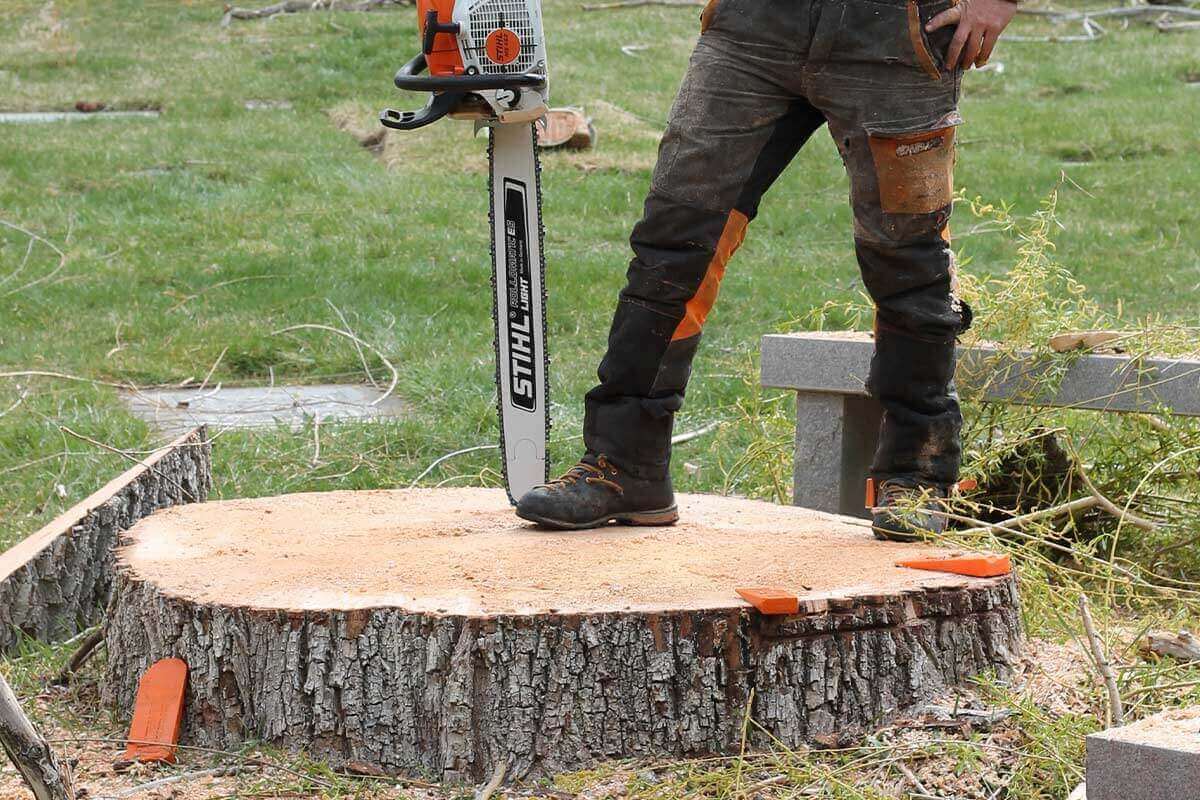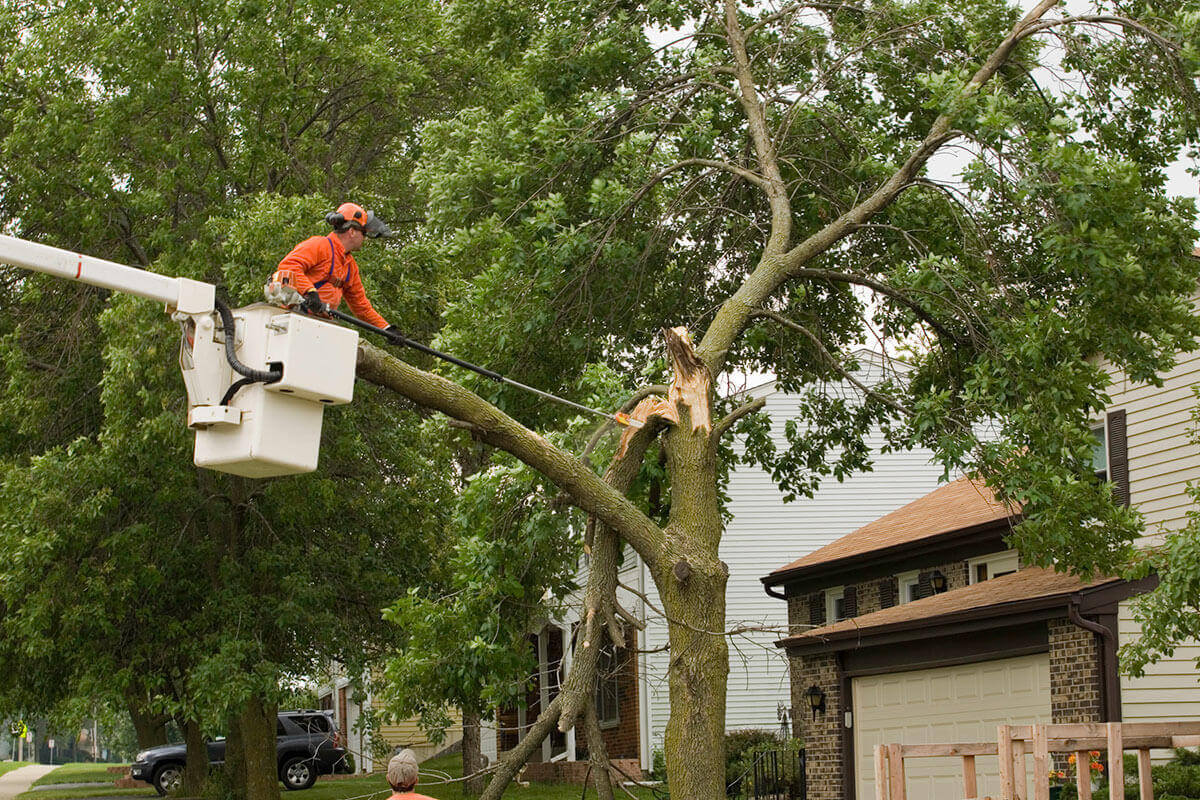Managing large trees on sloped terrain in the Blue Mountains presents unique challenges that demand careful consideration and expert handling. The region’s distinctive landscape, characterised by steep gradients and diverse vegetation, requires specialised approaches to tree removal and maintenance.
The proper management of trees on sloped land serves multiple critical purposes:
- Slope Stability Protection – Trees play a vital role in preventing soil erosion and maintaining ground stability through their root systems
- Safety Assurance – Strategic tree removal helps prevent potential hazards from falling branches or entire trees
- Property Protection – Well-executed tree management safeguards buildings and infrastructure from damage
- Environmental Conservation – Responsible tree removal practices preserve the natural ecosystem and wildlife habitats
The Tree Removal Blue Mountains region operates under strict regulatory frameworks governing tree removal activities. These regulations ensure:
- Protected species preservation
- Heritage conservation
- Environmental impact minimisation
- Safe work practices implementation
Property owners must navigate these requirements while addressing practical challenges specific to sloped terrain:
- Limited equipment access
- Complex root system management
- Soil stability considerations
- Drainage pattern impacts
Professional tree removal services in the Blue Mountains combine technical expertise with local knowledge to deliver safe, compliant, and effective solutions for managing large trees on challenging terrain.
Assessing Trees for Health and Risk
Professional tree assessment is crucial for managing trees safely and effectively on sloped terrain. It involves a detailed examination of various factors that influence both the health of the tree and any potential hazards it may pose.
Key Health Indicators:
- Crown density and leaf colour
- Branch structure integrity
- Root system stability
- Presence of decay or disease
- Growth patterns and tree vigour
Risk Assessment Factors on Slopes:
- Soil composition and stability
- Drainage patterns
- Root anchor strength
- Lean angle relative to slope
- Proximity to structures or pathways
Trees located on sloped land require a specialised assessment approach due to the specific gravitational forces and soil dynamics at play. The angle of the slope can influence how roots develop and may lead to uneven growth, which in turn affects the overall stability of the tree.
Warning Signs:
- Exposed or damaged roots
- Soil movement or cracking
- Unusual lean development
- Dead or dying branches
- Fungal growth on trunk or roots
A qualified arborist will carry out thorough visual inspections and may employ advanced diagnostic tools to evaluate any internal decay or root plate stability issues. This comprehensive assessment is essential in determining whether a tree needs to be removed and in identifying the safest method for carrying out that removal, taking into account the specific conditions of the site.
The evaluation process also takes into consideration seasonal factors and weather patterns that could impact tree stability on slopes. For example, periods of heavy rainfall can saturate the soil and increase the risk of tree failure, making it critical to factor in timing when making decisions about removal.
Planning Safe Tree-Cutting/Removal Process
A strategic tree removal plan on sloped terrain requires meticulous preparation and precise execution. The process demands careful consideration of multiple factors to maintain both safety and slope stability.
Essential Planning Steps:
- Establish clear access routes for equipment and personnel
- Mark designated safety zones and escape paths
- Position equipment on stable ground
- Set up appropriate rigging systems for controlled directional felling
- Install temporary erosion control measures
Slope Stability Preservation:
The removal process must protect the slope’s structural integrity. Key measures include:
- Staged removal approach – cutting trees in sections
- Root system preservation where possible
- Immediate soil stabilisation post-removal
- Strategic placement of erosion barriers
- Careful weight distribution of equipment
Equipment Requirements:
- Specialised climbing gear
- Appropriate rigging systems
- Mechanical aids for controlled lowering
- Erosion control materials
- Safety equipment for all personnel
The removal technique varies based on the slope gradient, soil composition, and tree location. Steep slopes might require sectional dismantling, where the tree is removed in small, manageable pieces to minimise ground disturbance. This methodical approach helps maintain soil stability and prevents potential landslides or erosion issues during and after the removal process.
Professional arborists assess wind patterns, gravitational forces, and load distribution throughout the removal process to ensure safe execution while protecting surrounding vegetation and infrastructure.
Understanding Sydney Tree Prevention Laws
Sydney’s tree management regulations protect urban greenery while ensuring public safety. The Blue Mountains City Council enforces strict guidelines for tree removal, requiring specific permits and approvals before any work begins.
When Do You Need Council Approval?
Property owners must obtain council approval for:
- Removing trees over 4 metres in height
- Pruning more than 10% of a tree’s canopy
- Any work on protected or heritage-listed trees
- Tree removal on slopes greater than 20 degrees
What Does the Application Process Involve?
The application process includes:
- Detailed site assessment documentation
- Arborist reports for protected species
- Environmental impact evaluation
- Proof of necessity for removal
What Are the Penalties for Non-Compliance?
Penalties for Non-Compliance:
- Fines up to $110,000 for individuals
- Legal action resulting in court proceedings
- Mandatory tree replacement orders
- Additional costs for remediation work
What Factors Do Local Councils Consider When Assessing Applications?
Local councils assess applications based on:
- Tree health and structural condition
- Impact on local biodiversity
- Slope stability considerations
- Heritage significance
- Property safety risks
How Do Tree Preservation Orders (TPOs) Affect Tree Management?
Each council area maintains specific Tree Preservation Orders (TPOs) detailing protected species and size thresholds. Professional arborists familiar with local regulations can guide property owners through the approval process, ensuring compliance with all legal requirements.
Additional Considerations Under State Environmental Planning Policy
The Blue Mountains region’s unique ecosystem requires additional considerations under the State Environmental Planning Policy. These regulations safeguard native vegetation while allowing necessary tree management for safety and development purposes.

Hiring Professional Tree Services in Sydney
Professional tree services deliver essential expertise for maintaining healthy trees and preserving property value in Sydney’s unique landscape. These specialists bring critical knowledge of local tree species, soil conditions, and weather patterns that impact tree health and stability.
Key Benefits of Professional Tree Services:
- Advanced equipment and proper techniques for safe tree management
- Expert assessment of tree health and potential risks
- Compliance with local regulations and safety standards
- Protection of surrounding property and vegetation
- Proper waste disposal and site clean-up
Property Value Enhancement:
Professional tree care directly impacts property aesthetics and value through:
- Strategic pruning to enhance tree appearance
- Disease prevention and treatment
- Removal of hazardous branches
- Maintenance of optimal tree spacing
- Protection of building foundations
Professional Care Requirements:
Qualified arborists possess current industry certifications, comprehensive insurance coverage, documented safety protocols, specialised equipment for complex jobs, as well as local experience and knowledge.
Regular professional tree maintenance prevents costly emergency services and ensures compliance with Sydney’s strict tree preservation regulations. Professional arborists also provide valuable guidance on species selection, placement, and long-term care strategies to maximise property value and environmental benefits.
Trees Down Under Services in Blue Mountains
Trees Down Under is a trusted name in the Blue Mountains region, providing comprehensive land clearing and development solutions. The company’s specialised services include:
- Tree Removal and Stump Grinding
- Vegetation Clearing and Mulching
- Site Preparation and Grading
- Environmental Assessments
The company’s dedication to environmental compliance shapes every project through strict adherence to local regulations and sustainable practices. Their team conducts thorough site evaluations to protect native flora and fauna while maintaining the region’s ecological balance.
Safety remains paramount in Trees Down Under’s operations, backed by extensive insurance coverage:
- Public Liability Insurance
- Professional Indemnity Insurance
- Workers’ Compensation
- Equipment and Vehicle Insurance
A robust risk management plan guides each project, incorporating:
- Site-specific safety protocols
- Regular equipment maintenance
- Trained personnel deployment
- Emergency response procedures
Trees Down Under’s local expertise in the Hills District and North Shore areas enables precise understanding of Blue Mountains’ unique terrain and vegetation patterns. This knowledge translates into efficient project execution while preserving the natural character of the region.
The company’s commitment to regulatory compliance ensures all work meets council requirements and environmental standards. Their team stays updated with current legislation and best practices in land clearing and vegetation management. Visit https://northcountryfarmer.com/how-to-book-affordable-tree-removal-in-the-hills-district/ to get how to book affordable tree removal in the Hills District.
Managing Large Trees on Sloped Land: Key Strategies for Success
Site Evaluation
A comprehensive site assessment forms the foundation of successful tree management on sloped terrain. Critical factors include:
- Slope gradient measurements
- Soil composition analysis
- Existing drainage patterns
- Root system assessment
- Adjacent property considerations
Site Planning
Effective planning preserves natural landscape features while minimising environmental impact:
- Creation of detailed topographical maps
- Identification of protected vegetation zones
- Development of access routes for equipment
- Establishment of safety buffer zones
- Integration of existing drainage systems
Soil Health Preservation
Maintaining soil integrity prevents erosion and supports long-term slope stability:
- Implementation of soil retention barriers
- Application of appropriate mulching techniques
- Protection of existing root systems
- Topsoil preservation during operations
- Post-work soil restoration practices
Vegetation Management Strategies
Strategic vegetation management strengthens slope stability:
- Selection of native species for replanting
- Implementation of staged removal processes
- Establishment of ground cover vegetation
- Creation of vegetation buffer zones
- Regular monitoring of plant health
Water Management Techniques
Proper water control prevents erosion and maintains slope integrity:
- Installation of runoff diversion systems
- Creation of water retention areas
- Implementation of infiltration zones
- Maintenance of natural drainage patterns
- Regular monitoring of water flow patterns
Safe Tree Removal Practices
Professional removal techniques ensure minimal site disturbance:
- Use of specialised winching equipment
- Implementation of sectional dismantling
- Employment of dry ground working conditions
- Utilisation of rope access techniques
- Application of precision cutting methods

Legal and Safety Compliance
Adherence to regulations protects both property and environment:
- Acquisition of necessary permits
- Maintenance of detailed documentation
- Compliance with local council requirements
- Regular safety audits
- Environmental impact assessments
Successful management of large trees on sloped land in the Blue Mountains requires a methodical approach combining technical expertise with environmental consciousness. Each phase demands careful consideration of site-specific factors and implementation of appropriate management strategies.
The integration of proper drainage systems, soil preservation techniques, and vegetation management creates a balanced approach to tree management. Professional arborists assess each situation individually, developing customised solutions that address both immediate needs and long-term stability requirements.
Safety remains paramount throughout all operations. Specialised equipment, trained personnel, and strict adherence to safety protocols ensure successful outcomes while protecting both workers and property. Regular monitoring and maintenance programmes help identify potential issues before they become significant problems.
Environmental responsibility guides each decision in the tree management process. From initial planning through final implementation, preservation of natural systems and minimisation of site disturbance remain key priorities. This approach ensures sustainable outcomes that benefit both property owners and the broader Blue Mountains ecosystem.



